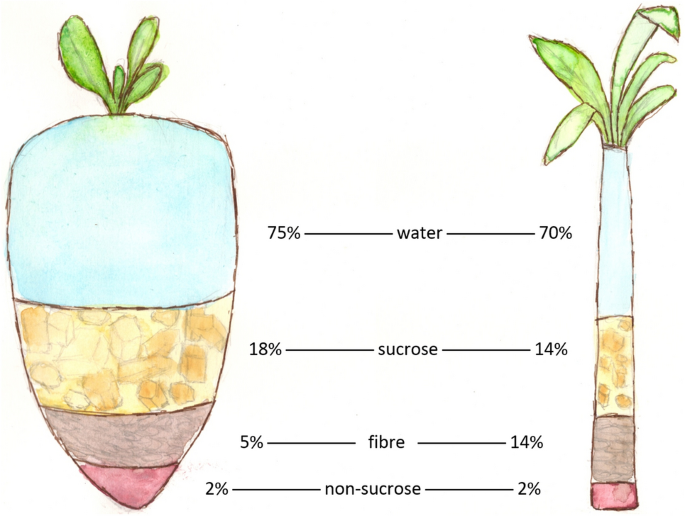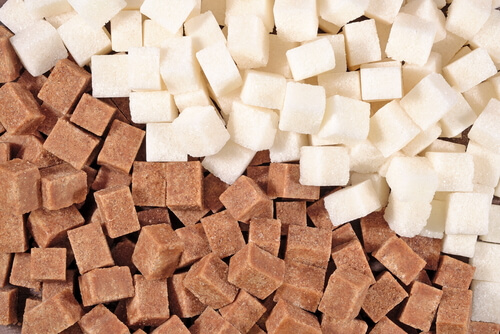Learning about beet sugar vs cane sugar can help bakers decide which matches their preferences better.
Learning about beet sugar vs cane sugar can help bakers decide which matches their preferences better.
Blog Article
Discover the Uses and Perks of Beet Sugar Vs Cane Sugar in Your Daily Diet
Discovering the distinct high qualities of beet and cane sugar reveals even more than simply their sweetening capabilities; it highlights their distinct effect on wellness and culinary arts. Beet sugar, understood for its subtle flavor, is commonly preferred in fragile treats, whereas cane sugar, with its hint of molasses, includes splendor to robust recipes. Each type holds its own nutritional profile and glycemic ramifications, welcoming a much deeper understanding of their duties in a balanced diet plan and sustainable intake practices.
Origin and Production Procedures of Beet and Cane Sugar

The unique climates and dirt types required for growing sugar beets and sugarcane add to differences in their cultivation practices and geographic distribution, affecting the business economics and sustainability of their manufacturing. beet sugar vs cane sugar.
Nutritional Contrast In Between Beet Sugar and Cane Sugar
Regardless of originating from various plants, beet sugar and cane sugar are nutritionally extremely similar, both primarily including sucrose. Each provides regarding 4 calories per gram, equating to about 16 calories per teaspoon. Structurally, both sugars are made up of around 99.95% sucrose, with marginal amounts of other materials like moisture and trace element, which do not dramatically alter their dietary profiles.

Eventually, when choosing between beet sugar and cane sugar based upon nutritional web content alone, both deal similar benefits and disadvantages as they are essentially types of the same particle-- sucrose, giving fast power without various other nutrients.
Influence On Health: Glycemic Index and Caloric Material
Checking out better into the effects of beet sugar and cane sugar on wellness, it is necessary to consider their glycemic index and caloric material. Both sugars are classified as sucrose, which includes sugar and fructose. This structure leads them to have a similar influence on blood sugar degrees. The glycemic index (GI) of both beet and cane sugar is around 65, categorizing them as high-GI foods, which can create fast spikes in blood sugar levels. This is an essential aspect for individuals managing diabetes or those attempting to maintain their power levels throughout the day.
Each kind of sugar includes about 4 calories per gram, making their calorie content equivalent. For those keeping visit their website an eye on caloric intake, particularly when taking care of weight or metabolic health and wellness problems, comprehending this equivalence is crucial (beet sugar vs cane sugar). Nevertheless, extreme consumption of any kind of high-calorie, high-GI food can contribute to wellness concerns such as weight problems, cardiovascular disease, and insulin resistance.
Environmental and Economic Considerations of Sugar Manufacturing
Beyond health and wellness effects, the production useful content of beet and cane sugar additionally increases considerable ecological and economic worries. Sugar beet growing often tends to call for cooler environments and has a lower geographical impact compared to sugar cane, which grows in tropical regions.
Furthermore, the usage of pesticides and fertilizers in both beet and cane sugar farming can result in soil degradation and contamination, further affecting biodiversity and regional water bodies (beet sugar vs cane sugar). The option between cultivating sugar beet or cane usually depends upon neighborhood ecological problems and financial variables, making the sustainability of sugar production a complicated concern
Culinary Applications and Taste Distinctions
While the ecological and financial facets of sugar manufacturing are undoubtedly considerable, the selection between beet and cane sugar also affects culinary applications and taste profiles. Beet sugar, stemmed from the sugar beet plant, is understood for its remarkably neutral taste. This makes it a versatile ingredient in baking, where it does not change the taste of other components. It liquifies rapidly and is excellent for usage in cakes, cookies, and breads.
Walking cane sugar, drawn out from sugarcane, often preserves molasses traces, which impart a distinctive richness and depth. This small molasses flavor boosts the complexity of baked items, sauces, and marinades. It is particularly favored in items where a sugar undertone is wanted, such as in brownies or gingerbread. Additionally, the mild variation in dampness web content in between beet and cane sugar can affect the texture and uniformity of recipes, making cane sugar a recommended choice for certain dishes that benefit from its distinct properties.

Conclusion
To conclude, both beet and cane sugar have distinctive origins and production helpful resources procedures, offering similar dietary profiles with mild differences in salt web content and taste. While their influence on health and wellness, especially relating to glycemic index and calories, is equivalent, the option between them typically boils down to ecological, financial factors, and details cooking demands. Comprehending these elements can lead customers in making educated decisions that straighten with their health and wellness objectives and taste choices.
Report this page